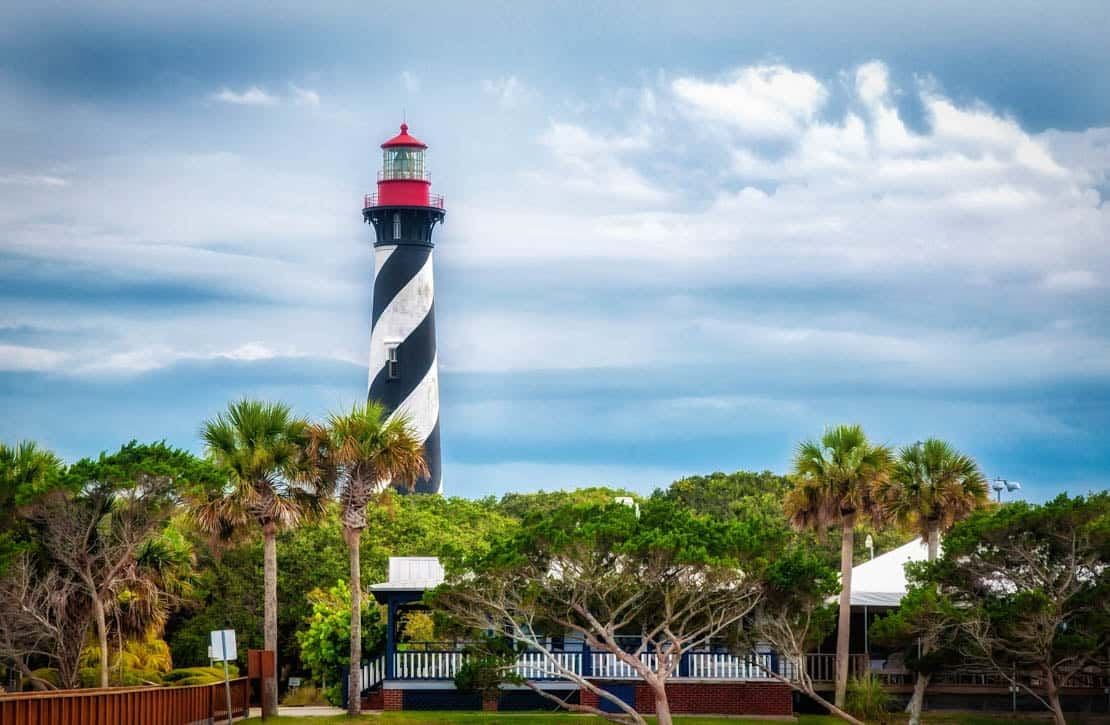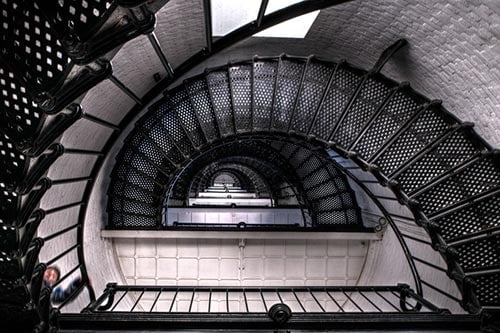81 Lighthouse Avenue St. Augustine, FL 32080
St. Augustine, Florida, the oldest city in the nation, is home to arguably the most haunted lighthouse in America.
During its 100 years of existence, many lives have been lost in or around the landmark’s grounds, leading us to believe that those who perished there never truly left. With a reputation for its hauntings and the history to back it up, no haunted tour is complete without a visit to the St. Augustine Lighthouse.

It was 1872 when Hezekiah Pittee, superintendent for the St. Augustine Lighthouse construction project, realized that building the watchtower would take much longer than expected.
He was already a year and a half into the project and knew he would be there for a while. A true family man, he decided to move his wife and two daughters from the chill of Maine to the heat of the Florida coast to live with him.
Given that his daughters were young, a lot of their time in St. Augustine was spent outside playing.
One day, Pittee’s two daughters and three of their friends were pushing each other in a small railcar that was used for transporting supplies from the nearby pier to the lighthouse. This was their favorite game, and they played it often, but today was different.
This time, the wheels of the railcar shifted and the children fell off the pier, plunging into the cold water below.
Fortunately, a nearby construction worker saw what happened and rushed to pull the children out of the water, but sadly, not everyone made it out alive. Both of Pittee’s daughters and one of their friends drowned.
Since the accident, both visitors and lighthouse workers have reported hearing girls giggling in the woods behind the watchtower. Others claim they’ve witnessed what look like 4-foot-tall figures peeking around corners.
It’s important to note that even though these girls are very much haunting the landmark, they are playful spirits.
Despite their tragic end, the three children seem to be enjoying the afterlife in their old home.
Although encounters with the ghost children have been positive, there are other, more sinister, entities lurking within this 19th-century watchtower.
Possibly the most blood-curdling presence witnessed in the lighthouse is “The Man.”
Usually spotted in the basement of what used to be the lightkeeper’s house, this shadow figure is known for making the room smell like cigar smoke and flooding visitors with feelings of foreboding.
Perhaps the most famous encounter with the shadow figure happened in 2006, when the Ghost Hunters visited the lighthouse. In the episode aired the same year, a black misty figure is seen approximately two stories above the cast’s location. The man is seen peeking over a railing before turning around and vanishing.
As far as who this man is, there are a few theories. Some believe it’s the ghost of William Russel, who was the lighthouse keeper during the 1850s. Russel was known for his passionate and protective personality. People believe he’s only trying to look after his home and place of work, even if it means scaring off a few visitors.
A more likely culprit is another lighthouse keeper by the name of Joseph Andreu. According to legend, Andreu suffered a fatal accident when he fell from the tower in 1859. His death was so sudden; many argue he didn’t realize he had died. For over 100 years, his spirit has been living in his old quarters, smoking a cigar to pass the time.
Aside from its ghostly activity, this landmark is known for its innovative past, once representing modern marine transport.
The St. Augustine Lighthouse stands today where 16th-century Spanish watchtowers once stood.
The construction of the lighthouse began in 1871, taking over three years to complete. Once it was finished, the former primitive wooden towers were taken down and replaced with the St. Augustine Lighthouse, the oldest permanent aid to navigation in North America.
Atop the watchtower, a hand-blown French-made Fresnel lens was placed, which had been designed explicitly for lighthouses. The impressive 12-foot-tall lens contained 370 hand-cut glass prisms arranged in a beehive pattern.
The lighthouse stood 165 feet above sea level and included a black and white banded design. To access the top, the lighthouse keeper had to climb 219 steps. After completing the trek upwards, the spectacular panoramic views of the Atlantic Ocean were something to look forward to.
Each lighthouse on the east coast of the U.S. has a distinct appearance and lighting characteristic known as the “nightmark.” This mark was used by sailors to identify their location and distance from shore. Initially flashing every three minutes, the St. Augustine lighthouse’s nightmark now flashes every thirty seconds.
Visit the St. Augustine Lighthouse to learn more about the nation’s navigation history and the ghosts that came to life because of it.
The lighthouse is open to the public for tours of the grounds and the adjacent maritime museum. Visiting the landmark is family-friendly with activities such as playgrounds and exhibits for children to enjoy.
Ghost tours are also offered at the landmark. A ghost tour is the best option for visitors wanting to explore the lighthouse at night.

St. Augustine's famous haunted Fort

One of St. Augustine's haunted cemeteries

The famous haunted Lighthouse